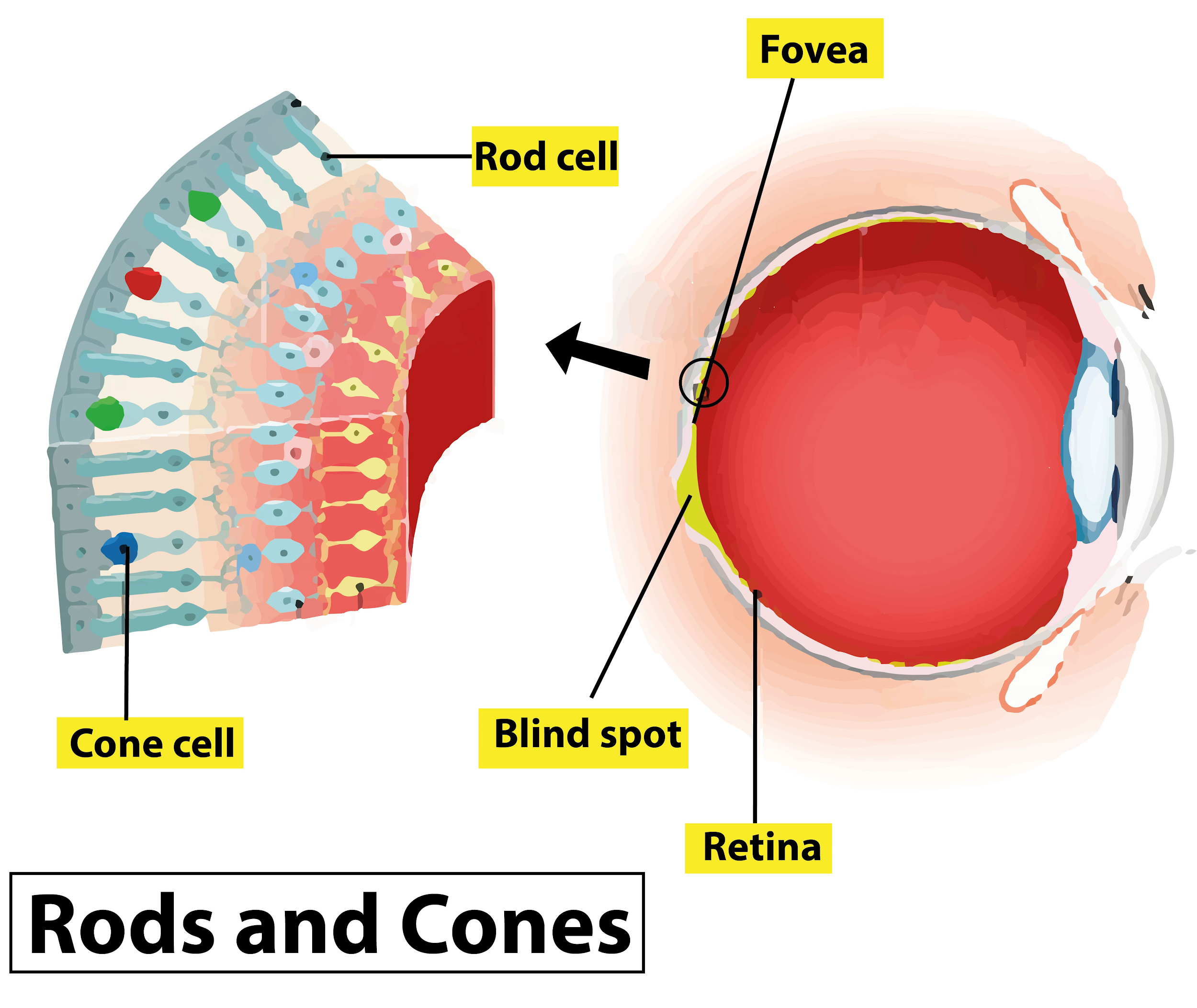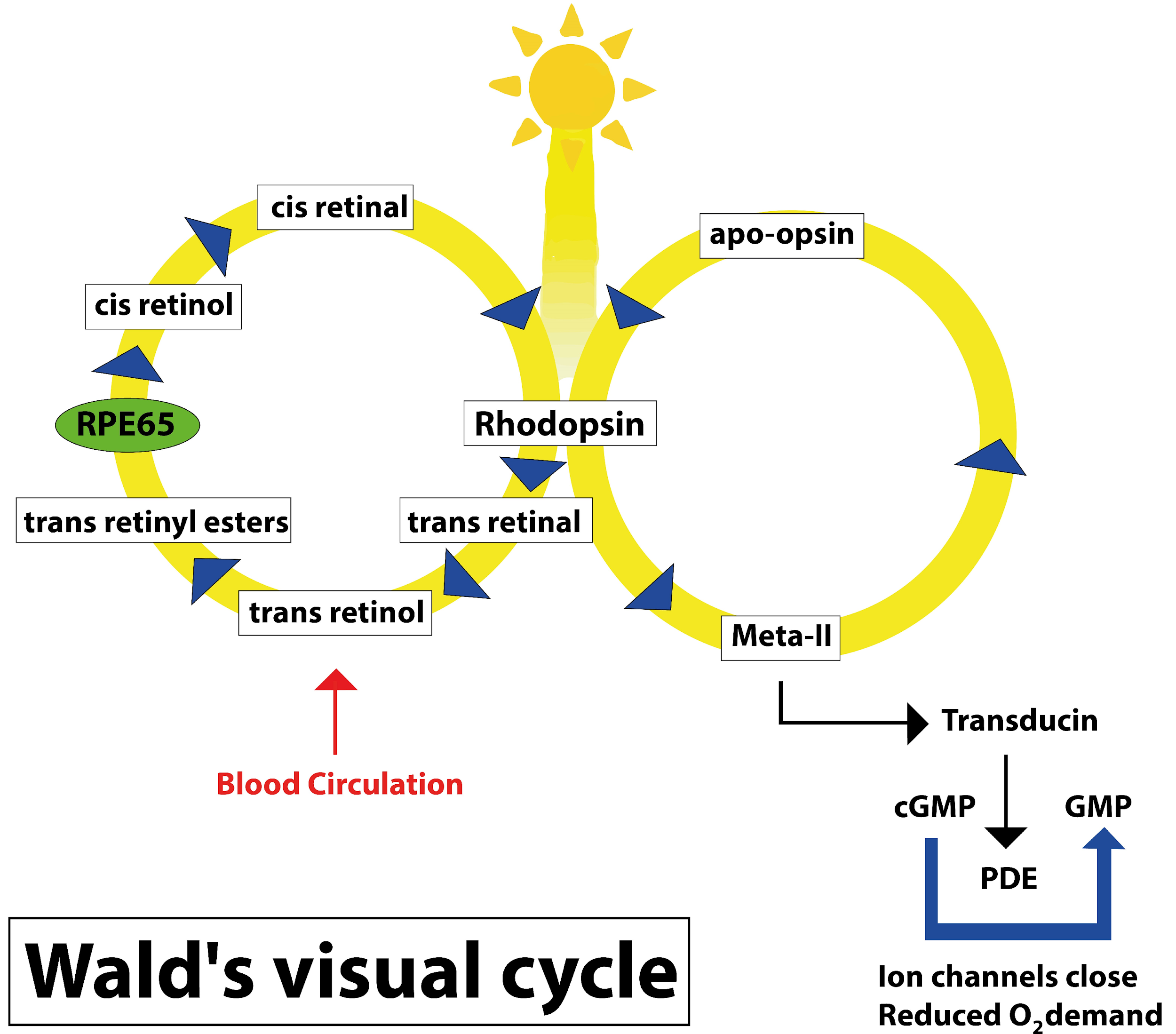
Sensory neurons of the retina are
(a)Maculae and cristae
(b)Pacinian and Ruffini’s corpuscles
(c)Rods and cones
(d)All of the above
Answer
568.2k+ views
Hint: Sensory neurons are the neurons that carry information of stimuli from the organs to the CNS. The retina has two types of sensory neurons, one which is necessary for low light vision and another which carries the color vision information. Night blindness is caused due to damage to one of those two types of neurons.
Complete answer:
The sensory neurons of the retina of the eye are rods and cones, as they transmit information to the other cells.
-Rods act as the photoreceptor cells that contain the pigment rhodopsin and are associated with the scotopic vision of the eye that is the low light vision.
-Cones are the photoreceptor cells containing iodopsin, cyanopsin, and porpyrosin pigments.
These cells are associated with the daylight vision of the eye and the color vision.

Additional Information: -Wald’s Visual Cycle
It is the process of conversion of light falling onto the retina into electrical signals in the rod cells, cone cells, and certain photosensitive ganglion cells present in the retina of the eye.
The visual cycle is a biological conversion of the photon or packets of light energy into an electrical signal in the retina. This process occurs with the help of G-protein coupled receptors called opsins.
So, the correct answer is, “Rods and cones”
Note: -Rods and cones are the main sensory neurons in the retina.
-However, there are other types of neurons in the retina.
-The five basic classes of neurons present within the retina are the photoreceptor cells which are the rods and cones, bipolar cells, ganglion cells, horizontal cells, and the amacrine cells.
-All of them perform specific functions and coordinate to result in the visual response.

Complete answer:
The sensory neurons of the retina of the eye are rods and cones, as they transmit information to the other cells.
-Rods act as the photoreceptor cells that contain the pigment rhodopsin and are associated with the scotopic vision of the eye that is the low light vision.
-Cones are the photoreceptor cells containing iodopsin, cyanopsin, and porpyrosin pigments.
These cells are associated with the daylight vision of the eye and the color vision.

Additional Information: -Wald’s Visual Cycle
It is the process of conversion of light falling onto the retina into electrical signals in the rod cells, cone cells, and certain photosensitive ganglion cells present in the retina of the eye.
The visual cycle is a biological conversion of the photon or packets of light energy into an electrical signal in the retina. This process occurs with the help of G-protein coupled receptors called opsins.
So, the correct answer is, “Rods and cones”
Note: -Rods and cones are the main sensory neurons in the retina.
-However, there are other types of neurons in the retina.
-The five basic classes of neurons present within the retina are the photoreceptor cells which are the rods and cones, bipolar cells, ganglion cells, horizontal cells, and the amacrine cells.
-All of them perform specific functions and coordinate to result in the visual response.

Recently Updated Pages
Master Class 12 Business Studies: Engaging Questions & Answers for Success

Master Class 12 Economics: Engaging Questions & Answers for Success

Master Class 12 English: Engaging Questions & Answers for Success

Master Class 12 Maths: Engaging Questions & Answers for Success

Master Class 12 Social Science: Engaging Questions & Answers for Success

Master Class 12 Chemistry: Engaging Questions & Answers for Success

Trending doubts
What is meant by exothermic and endothermic reactions class 11 chemistry CBSE

Which animal has three hearts class 11 biology CBSE

10 examples of friction in our daily life

One Metric ton is equal to kg A 10000 B 1000 C 100 class 11 physics CBSE

1 Quintal is equal to a 110 kg b 10 kg c 100kg d 1000 class 11 physics CBSE

Difference Between Prokaryotic Cells and Eukaryotic Cells




